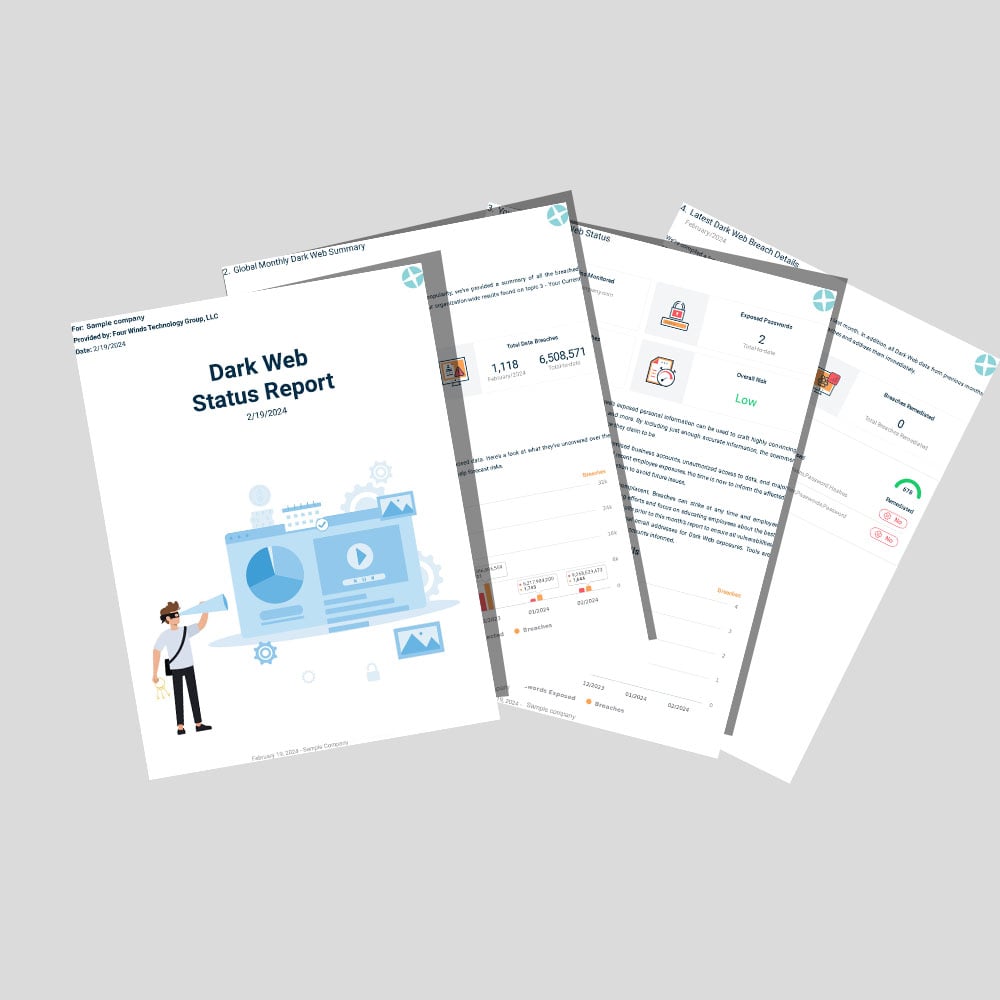
The Importance of Security Risk Assessments
As cybersecurity threats grow, businesses must take proactive steps to stay ahead. One of the most effective strategies is implementing Security Risk Assessments—a critical process that not only identifies vulnerabilities but empowers your team to actively protect sensitive data. By fostering a culture of vigilance, you can safeguard your digital assets and ensure your business remains resilient against evolving cyber threats.
This blog explores the significance of security risk assessments and how they shield your valuable data from falling into the hands of malicious actors while helping your business stay compliant.
For a condensed version of this article click on our one pager below.
Understanding Security Risk Assessments
A security risk assessment is a comprehensive evaluation of your organization’s digital infrastructure, systems, and processes. Its goal is to:
- Identify vulnerabilities.
- Uncover potential threats.
- Strengthen the confidentiality, integrity, and availability of sensitive data.
By analyzing your current security measures, a risk assessment provides critical insights into your organization’s readiness against cyber threats, enabling you to implement targeted mitigation strategies.
FAQ: What Does a Security Risk Assessment Include?
- Threat Identification: Pinpointing potential risks like phishing, ransomware, and insider threats.
- Vulnerability Analysis: Examining your infrastructure, software, and human factors for weaknesses.
- Risk Evaluation: Assessing the impact and likelihood of identified threats.
- Actionable Recommendations: Offering solutions to address and mitigate risks effectively.
Why Security Risk Assessments Matter
1. Proactive Threat Identification
Hackers often exploit vulnerabilities that go unnoticed until it’s too late. A security risk assessment enables you to identify and address weak points in your network, applications, and data storage before cybercriminals exploit them. This proactive approach helps mitigate risks and prevents unauthorized access.
Did You Know?
Phishing is one of the top causes of data breaches, followed by the use of stolen credentials and ransomware.
Curious about your company’s dark web safety status? Learn more about our free exclusive report and secure your online presence today!
FAQ: How Often Should I Conduct a Security Risk Assessment?
It’s recommended to conduct a full security risk assessment at least once a year. However, assessments should also be performed:
- After significant changes to your IT infrastructure.
- Following a security incident.
- When introducing new systems or software.
2. Compliance and Regulatory Requirements
Depending on your industry, compliance regulations like GDPR, HIPAA, or PCI-DSS may require stringent data protection measures. Conducting regular security risk assessments ensures your business aligns with these requirements, helping you avoid costly penalties and reputational damage.
3. Data Protection and Client Trust
A single data breach can lead to:
- Financial loss.
- Legal complications.
- Damage to your brand's reputation.
By investing in security risk assessments, you demonstrate a strong commitment to protecting your clients’ sensitive information, fostering trust, and building long-term relationships.
Did You Know?
Targeted phishing attempts, including spear-phishing and smishing, have risen by 45%.
FAQ: What’s the Connection Between Security Risk Assessments and the Dark Web?
Security risk assessments help identify vulnerabilities that could expose your organization to the dark web. By addressing these weak points, you reduce the risk of sensitive data being sold or exploited in illicit activities.
4. Dark Web Threat Mitigation
The dark web serves as a marketplace for stolen data, making it vital to stay vigilant. A security risk assessment helps you:
- Identify vulnerabilities that could expose your data to cybercriminals.
- Implement robust security measures to reduce the risk of data exploitation.
This proactive approach ensures your organization is less likely to have sensitive information end up on the dark web.
The Bottom Line
Securing your organization’s digital assets starts with regular security risk assessments. By gaining crucial insights into potential threats, you can implement effective Risk Management plans that protect your data, strengthen compliance, and build trust with clients.
Don’t wait for a breach—get your free dark web report today and take the first step toward securing your business.
We’re here to help. Let’s make cybersecurity a priority!

SentinelOne: Why Upgrading Antivirus Is a Smart Business Move
Cyber threats are like bad weather—unpredictable and inevitable. But here’s the good news: upgrading to a modern antivirus like SentinelOne is like...

Defend With Simplicity: Cybersecurity Awareness Uncovered
In today’s fast-paced digital world, simplicity is often the key to robust cybersecurity defenses. At the heart of this simplicity lies...




